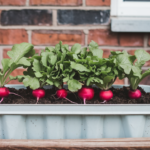There’s nothing quite like stepping onto my balcony or into my kitchen garden and plucking a handful of fresh basil leaves to toss into a dish. Basil has been a staple in my home for years, not just for its vibrant flavor but also because it’s surprisingly easy to grow in pots. If you’ve ever wanted to cultivate your own lush, fragrant basil, let me share my personal process—what’s worked for me and how I keep my plants happy all season long.
Choosing the Right Pot and Soil
When I first started growing basil, I underestimated the importance of the right pot. I learned quickly that basil needs a container with good drainage. I prefer using pots that are at least 8–12 inches in diameter to give the roots ample room to spread. Terracotta pots are my favorite because they allow the soil to breathe and prevent excess moisture buildup, which can lead to root rot.
For soil, I go with a high-quality potting mix enriched with organic compost. Basil thrives in well-draining soil, so I make sure it’s light and airy by mixing in a bit of perlite or sand. I also like to add some worm castings or compost tea to give the plants an extra nutrient boost.

Planting Basil: Seeds or Seedlings?
I’ve grown basil both from seeds and from small nursery plants, and both methods work well. When starting from seed, I sprinkle them lightly on the soil surface and cover them with just a thin layer of soil—basil seeds need light to germinate. Keeping the soil consistently moist, I usually see tiny sprouts within a week.
If I’m short on time or want an instant herb garden, I buy young basil plants and transplant them directly into my prepared pots. I gently loosen the roots before placing them in the soil, ensuring they have plenty of space to grow.
Sunlight: The Key to Thriving Basil
One of the first mistakes I made was placing my basil in a spot with only partial sunlight. Basil loves warmth and needs at least 6–8 hours of direct sun daily. I now keep my pots on a sunny windowsill, balcony, or patio where they get morning sun and some afternoon shade to protect them from the intense midday heat.
If I notice my basil looking a little leggy or pale, I know it’s not getting enough light. In those cases, I move the pot to a sunnier location or supplement with a grow light indoors.
Watering and Feeding
I used to think basil needed constant watering, but I quickly learned that too much water can be just as harmful as too little. Now, I check the soil with my finger—if the top inch feels dry, it’s time to water. I always water at the base of the plant, avoiding wetting the leaves to prevent fungal issues.
Every couple of weeks, I feed my basil with a diluted liquid fertilizer or compost tea. I’ve found that too much fertilizer can cause the leaves to lose some of their strong flavor, so I keep it light.
Pruning for a Bushy Plant
Pruning is where I made the biggest difference in my basil-growing success. Early on, I would let my plants grow tall and spindly, not realizing that frequent harvesting actually encourages fuller growth. Now, as soon as my basil reaches about 6 inches tall, I start pinching off the top leaves just above a set of lower leaves. This encourages the plant to branch out and become lush rather than leggy.
Whenever I see flower buds forming, I snip them off right away. While basil flowers are lovely and attract pollinators, they signal the plant to stop producing leaves. Keeping my basil trimmed ensures I have an abundant harvest all season long.
Dealing with Pests and Problems
Basil is relatively easy to care for, but I’ve had my fair share of battles with pests like aphids and whiteflies. When I notice tiny bugs on the leaves, I give the plant a gentle rinse with water or spray it with a mixture of neem oil and mild soap. I also check under the leaves regularly to catch any issues before they become a problem.
Yellowing leaves usually mean I’ve either overwatered or the plant needs a bit more nitrogen. A quick soil check and a light feed usually get things back on track.
Harvesting and Enjoying Fresh Basil
One of my favorite moments is finally harvesting those fresh, fragrant leaves. I always pick the leaves from the top first, using scissors or pinching them off with my fingers. This keeps the plant growing strong and prevents it from getting too tall and scraggly.
I use my basil in everything from homemade pesto to fresh caprese salads and infused oils. If I ever have more than I can use, I dry or freeze the leaves for later.
Final Thoughts
Growing basil in pots has been one of the most rewarding parts of my gardening journey. It’s easy, requires minimal space, and provides a constant supply of fresh, aromatic leaves for my kitchen. Whether you’re a seasoned gardener or just starting, basil is a fantastic herb to grow. With the right pot, plenty of sunlight, and a little care, you’ll have a thriving basil plant in no time.
Do you grow basil in pots? I’d love to hear your tips and experiences! Let’s share our love for this delicious and versatile herb


